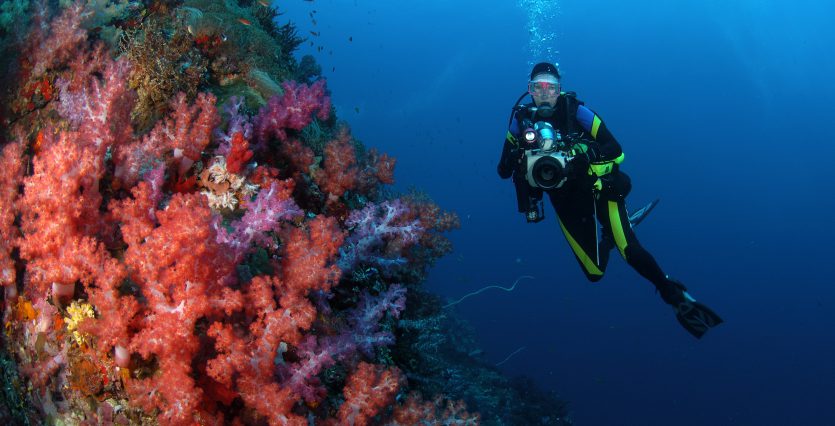From 2005 to 2008, I was the editor of a quarterly magazine focused on the underwater world. Many of our readers considered it the “National Geographic of the underwater world.” It was filled with in-depth articles and beautiful photos. In fact, several of our contributors were National Geographic contributors. A starry-eyed new editor, I imagined our audience was gung-ho in favor of protecting the underwater environment and would want to know about issues the underwater world was facing. As a result, I recruited Brian Skerry, one of National Geographic’s premier underwater photographers, to contribute a regular column in our publication. He wanted to raise awareness of these kinds of environmental issues and had incredible imagery to illustrate his articles, so of course, I was excited to see what change we could make.
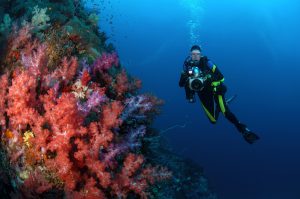
When his first column ran, a story about the Canadian seal hunt, I was shocked at what happened next. I began to receive feedback from subscribers who were opposed to the article. Not that they wanted baby seals to be clubbed for their fur, but rather they just wanted to relax and be entertained by the magazine, not upset by what they saw there. One reader wrote, “If I wanted to subscribe to PETA’s magazine I would.” That perspective had never crossed my mind when planning the column.
Not long after that initial reaction, I was attending DEMA and had lunch with the legendary underwater cinematographer Stan Waterman, during which I described what had happened and what ensued. The sage storyteller thought about what I just described for a moment but didn’t look surprised at the reaction the article received. While we agreed that the silent majority was probably shocked but glad to be made aware of the issue, there was clearly a large enough segment of the population that shared the sentiment of the people who had complained. “I learned early on,” Waterman told me, “that if you want to engage people with an environmental cause, you have to entertain them and focus on the positive message. Standing on a soapbox and telling people how bad things usually have the opposite reaction.”
In other words, introducing people to the sport of scuba diving and showing them a great time will more than likely have the
desired effect of making people want to help preserve the underwater environment. But, that said, they might just need a small nudge in the right direction, and there’s no better way to lead than by example.
There are certain NAUI specialty courses that naturally lend themselves to the cause by providing ample opportunity to do so. Specialties like Underwater Imaging, Night Diver, and Skin Diver have a natural focus on the inhabitants of the underwater world, but there are plenty of opportunities in both the Scuba Diver and Advanced Scuba Diver courses to introduce your students to practices that will help preserve the underwater world.
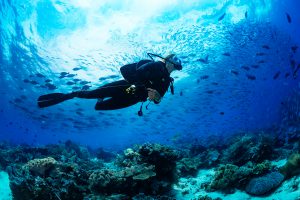
- Buoyancy, buoyancy, buoyancy – It is obvious and often emphasized frequently throughout the NAUI course lineup, but ensuring your students can hover with minimal effort up off the bottom without having to skull their hands is crucial to protecting the environment around the diver. “By the time divers get to the technical levels of diving like the cave and wreck diving courses,” says NAUI’s Technical Training Director, Tim O’Leary, “they already have the skills necessary to avoid contact with both the floor and the ceiling in those environments.” Buoyancy is a skill especially important for divers moving up through the ranks, not only for their own safety and enjoyment but also because, as O’Leary puts it, “Where our [technical] divers go, the world is pretty much untouched. In the case of caves, walls and deep wrecks, divers have a responsibility to be better about protecting the environment.” So, even if you’re training divers in a quarry where the bottom is simply bare rock, building buoyancy skills is the first step to making good, environmentally conscious divers.
- Set an example – Did you ever notice that no matter what you do in the water as a dive leader, your students will naturally do the same? If you face the surface and blow bubble rings, guess what: You turn around and half your divers are trying to do the same. You are their example and inspiration. When I was actively training divers in the open water, I used to always carry a small mesh catch bag. The purpose was not to capture my dinner, but instead, I’d pick up whatever bits of litter I found on the ocean floor as I was guiding my students around on the experience-building portion of each dive. Inevitably, without even mentioning it in the dive briefing, before the end of the first dive, most of my students would be handing me bits of trash that they found to put in my collection bag. As most of you know, many divers enjoy the dive, even more, when there is some kind of goal or mission attached to it. Without even having to explain this behavior, students naturally observed and started doing the same. It became an assumption that this is what divers do, starting in their Scuba Diver class. By the end of a weekend of open-water dives, my students were experts at cleaning up dive sites. No matter what diving environment you take your students to set the best example you can and they will follow.
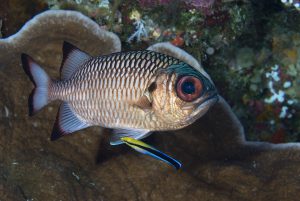
- Teach them what to look for – When people don’t know what they’re looking at, they’re missing more than half the picture. Take, for example, a cleaning station on the reef. To the uneducated diver, there’s a couple of small, often nondescript fish hanging out on a coral head and they disappear when the diver gets too close — as do the other bigger fish that were hanging out nearby. By educating students before they enter the water, they’ll know what to look for, how to behave and what’s going on. Armed with this knowledge, they might identify cleaning fish at a distance, know enough to give them plenty of space, and hover motionless as they observe the parade of bigger fish that come in for their daily cleaning. While you, the seasoned diver, already know these things and often take it for granted, your students don’t yet know. You have to teach them. It also doesn’t have to be something as unique as a cleaning station. I used to brief students prior to the dive on all of the sea creatures I knew we’d be likely to encounter at each site, no matter how mundane or common. In fact, the mundane and common creatures that you’re almost guaranteed to see are the best. Then, as you’re pointing out these creatures during the dive, the students are amazed and engaged with the underwater world, having heard about what they would see and then actually seeing it. Searching for a rare fish that they’re not as likely to see may not be as rewarding to them in the end.
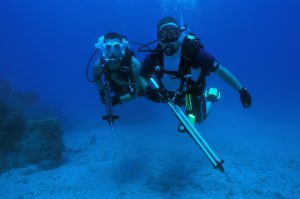
- Only take a clean shot – Whether you’re teaching spear fishing or Underwater Imaging, an important concept to impart on your students is to only take a clean shot. In other words, if they have to disturb the environment in a negative way, make unnecessary contact with the environment or possibly wound a creature inadvertently in the process of getting a shot, they have to understand it’s not worth it. There will be another fish or creature around the next corner that will offer a better, easier shot that won’t disturb the environment or risk injuring a sea creature. All too often, divers with an instrument like a camera or a speargun in their hands are more focused on their immediate task and forget the negative impact they can have if they’re careless.
- Help them understand the “Why” – Start With Why is a book by an inspirational writer, Simon Sinek. In this book, he studies the behavior of successful leaders and brands and concludes that the common factor that binds them all is that they start with the “Why.” If people understand the bigger picture, they’re more likely to identify themselves with a certain behavior (or products). For example, if we just tell divers not to touch the coral, they know they’re not supposed to, but they don’t understand the ramifications of what could happen if they do. When they understand that live coral is a colony of tiny animals that have taken hundreds of years and generations of growth to attain the size that the coral head currently occupies, they gain an appreciation for the colony. Then, when they understand that carelessly kicking that coral head with your fins could not only inadvertently kill some of the coral polyps, but could scrape off the coral’s protective coating and open the entire colony up to infection, they understand why they need to maintain better buoyancy and stay up and off of the reef.
Integrating these concepts and practices into your dive training will help develop the next generation of divers with environmental consciousness. But remember Waterman’s warning that lecturing people about all of the bad things that are happening is different from helping them to develop an appreciation and understanding of good environmental practices that divers should observe. Your students are naturally excited to become divers or climb through the ranks of divers — all you have to do is encourage them in the right direction.
Start With Why
As mentioned in this article, this book by Simon Sinek is a great read for anyone in a leadership position — and as dive leaders, that’s you! While we use it to illustrate an example of helping divers understand why staying up and off of the bottom is important, you can use the same concepts to communicate anything more clearly to your students. It’s also helpful for those of you in a sales position within your dive center.


